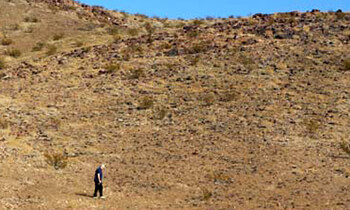Bobcat
Bobcat Attacks
A bobcat, faced with development and encroachment that erode its habitat and deplete its natural prey may raise some threat to the unwelcome human and domesticated animal intruders.
Threat to Humans
Even confronted with diminishing prey, a healthy bobcat seldom attacks a human. In fact, said to the Arizona Game and Fish Department's Internet site, "Bobcats are not considered a threat to human safety except in rare cases when they have rabies or are extremely aggressive." Attacks do happen, however. For example, bobcats, evidently rabid, attacked two people in southern Arizona in January of 2004, according to the Arizona Daily Star. If a bobcat does attack, it can inflict significant wounds, instinctively pouncing on the victim's shoulder area and going for the neck, according to the Alabama Cooperative Extension System's Extension Daily. It may cause particularly serious consequences if it has rabies. A bobcat attack requires prompt medical care, preferably with the carcass in tow so it can be checked for rabies.
Threat to Livestock
The bobcat poses a higher threat to livestock than to humans, although, overall, the "impact has generally been minor and localized," said Kevin Hansen in his book Bobcat: Master of Survival. Most often, it takes young calves, sheep, goats and domestic fowl. For instance, in Fiscal Year 2003, bobcats killed 8 calves, 73 sheep, 453 lambs, 389 goats and 864 chickens as well as numerous other fowl across 22 states, according to federal Wildlife Services statistics (as noted by Hansen). Undoubtedly, bobcats killed other animals and fowl that went unreported.
In calendar year 2004, noted Hansen, bobcats killed an estimated 11,100 sheep and lambs across the nation, according to U. S. Department of Agriculture statistics. This accounted for a loss of some $814,000. By comparison, coyotes killed an estimated 135,600; dogs, 29,800; pumas, 12,700; bears, 8,500; eagles, 6,300; and foxes, 4,200. Collectively, these predators accounted for losses of some $17,500,000. (The estimates of the numbers of animals killed have some imprecision because of some randomness in the survey and uncertainty in predator identification.)

Threat to Pets
Bobcats can pose a serious threat to pets, especially those that run freely in yards with native plant gardens, substantial wildlife, shelter, shade and water - and bobcats can be surprisingly bold around homes in rural areas.
For instance, a bobcat snatched a large house cat from a local family's front porch in Newnan, Georgia, in August 2008, according to Jill Isaac, Times-Herald. Two other bobcats walked right up to the backdoor of another house in Newnan, and the homeowner said "...they are really very friendly."
In another instance, a bobcat broke through a cage immediately beside a house in the southwest part of the Las Vegas and made a quick meal of a pair of parakeets and a yellow-crested cockatoo in November 2007, according to Keith Rogers, Las Vegas Review-Journal.
In still another instance, in other locations, a bobcat chased house cats across the roof of a family home, and yet another took several domestic fowls from a back yard.
Common Questions About Bobcats
What do bobcats look like?
What do bobcats eat?
What should I do if I see a bobcat?
How can I keep bobcats away from my property?
Adaptability
Bobcats often learn to cope very well with human encroachment. "Indeed," said Alabama's Extension Daily, "wildlife biologists have often marveled at how effectively the animals have adapted to human-introduced changes in their environment - a fact reflected in their surprisingly large numbers."
by Jay W. Sharp
The information provided on this web site and by this web site through content provided by Authors or third party providers, and in other sources to which it refers, is PROVIDED FOR INFORMATIONAL PURPOSES ONLY and should not be used to diagnose or treat a health problem or disease.
Information provided at and by DesertUSA is NOT A SUBSTITUTE FOR PROFESSIONAL MEDICAL CARE. If you have a medical concern, or suspect you have a health problem you should consult your primary doctor or specialist.
If you cannot agree to this Health and Medical Disclaimer, you are not permitted to use this web site and should exit immediately.
Share this page on Facebook:
The Desert Environment
The North American Deserts
Desert Geological Terms







